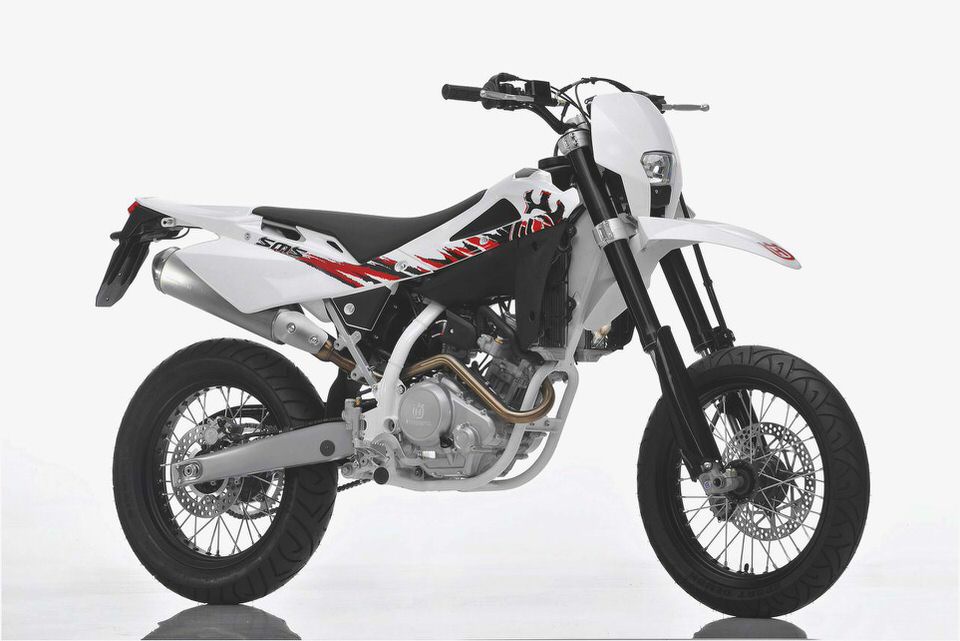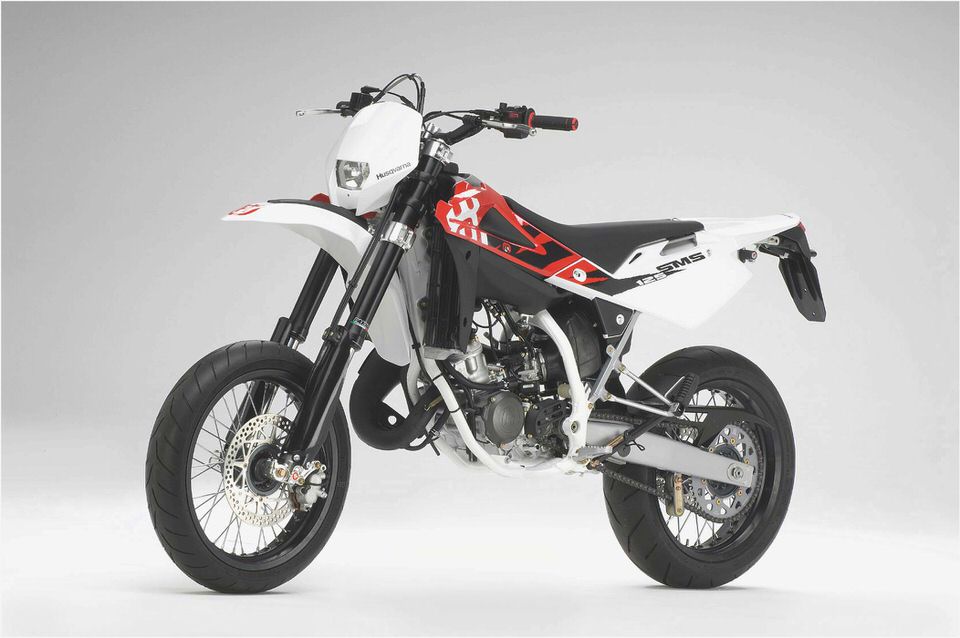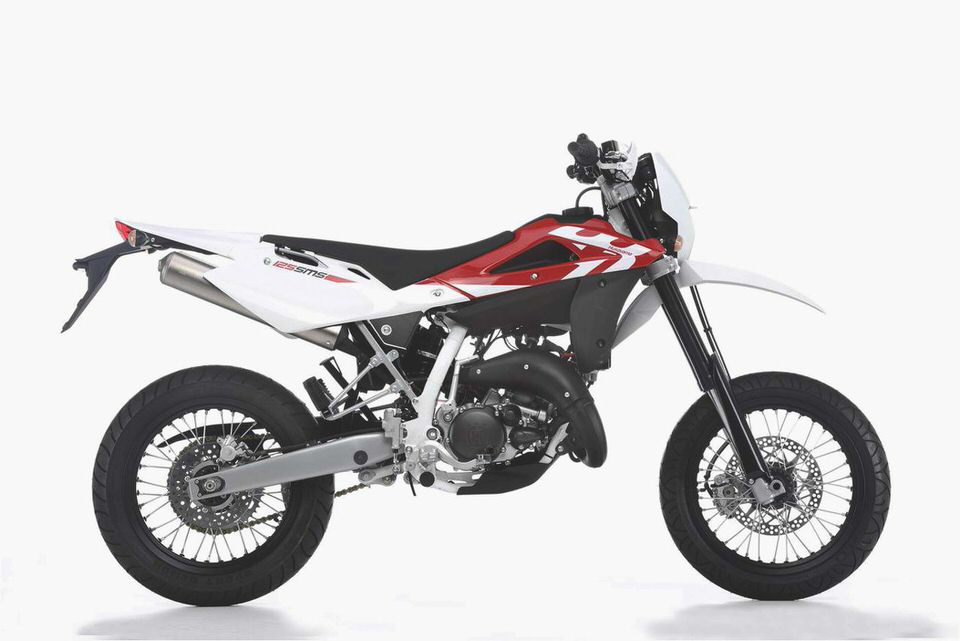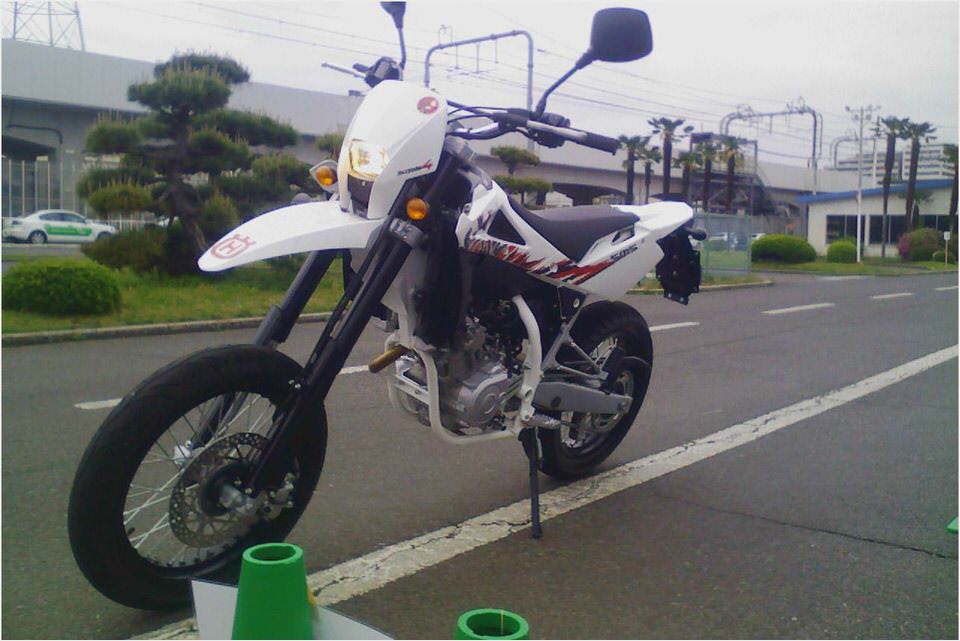
2011 Husqvarna TE630/SM630 First Ride
With new ownership by BMW, Husqvarna Motorcycles is on an aggressive path to establish itself in the world of off-road motorcycles. From small to large, Husky is developing and introducing new models across the spectrum, from a new 250cc platform to the burly open-class 630 machines. The TE630 and SM630 are the biggest this German/Italian firm offers, and they’re all-new this year.
The 2011 TE630 is Husqvarna’s effort at revitalizing its big-bore dual sport. We tested it near the company’s Italy HQ.
Distributed in the US as early release 2011 machines, these futuristic beauties were attacked from every angle by Husqvarna designers. To avoid confusion, let’s get this out of the way right now – these are virtually the same motorcycles. The SM version is equipped with some basic components common to motard bikes, but for all intents and purposes, they are the same.
Some specific details and riding impressions about the SM are on Page 2. but all the technical goodies explained in the TE portion hold true.
In order to mold them into the existing brand identity, Husky went through top to bottom and injected them with performance needed to gain serious foothold in the market. There’s been little in the way of improvement for the 650-class dual sports, so the Husky brings fresh life into a category that really sees most manufacturers content to grind out the same machines year after year – particularly the Japanese.
First off, the bike looks different than the former TE610, but we’ll get to that in a bit. The really important stuff is what’s on the inside. A dual overhead cam engine, replacing the SOHC design of the 610, sparks the new model with an increase in displacement from 570cc to 600cc. Husky achieved this by using a larger bore (98-100mm) with the same 76.4mm stroke.
The cylinder head is derived from Husky’s racy SM510 and uses a 12.4:1 compression ratio to squish fuel mixture. Fuel injection gets a 45mm throttle body, up from 42mm, and company representatives claim a 20% boost in power. The cooling system uses an integrated water temperature sensor to electronically adjust a solenoid in the radiator.
It also has a new impeller and water pump body.
More output from the DOHC engine is definitely a good thing, but the fueling could use some fine-tuning. The issue isn’t as noticeable with the TE, especially when riding off-road or on extremely rough pavement, both areas where the new Husqvarna dual sport excel.
One thing that Husqvarna prides itself on is that its street-legal bikes don’t need to be modified from their 50-state form in order to run. That has been the case in our experience, for the most part. The 630, like its smaller TE siblings, is injected, and the only real issue we noted was a penchant for lurching when the throttle is opened in the first quarter-turn or so.
This seems to be a common issue with FI-equipped bikes, which gets increasingly stronger with added displacement. You don’t notice it so much with a 250 because a smidge of gas isn’t producing much power, but on a 600cc machine the tiny crack of throttle sends the bike jolting. Working through paved corners is where this affects riders the most.
No matter how delicate the right wrist, it was impossible to navigate cleanly unless it was a fast sweeper that allowed increasing throttle. The bike also surges a bit when holding a steady pace. Both of these issues are more noticeable on the SM model.
So it doesn’t fuel perfectly, but the Husqvarna still knows what to do with that petrol. Power output is said to be increased 20% with the new engine. Not that we had any direct means of verifying that claim, but we can say that the bike is much livelier than, say, a Kawasaki KLR650, and the power curve is very usable.
There’s always torque available, though we spent most of the time in the bottom half of the throttle to avoid the engine vibrations which are noticeable. Once the throttle gets to about 1/3 open in any gear, the wide, square mirrors start to blur, otherwise they provide a great view. Rubber pads on the footpegs are one solution, but not a very good one since the vibes are a full-body experience transferred through the seat and handlebars as well.
Adding the peg cushions only makes it harder to get a toe under the shifter.
The Husqvarna TE630 offers performance that rivals or suprasses larger Japanese models. Not to mention, the IPD pastics make the bodywork extra sleek and modern.
It’s only a 600cc machine competing against the larger displacements of the KLR650 , Suzuki DR650SE and Honda XR650L. and in that regard it is very impressive. But, compared to the Japanese machines, Husqvarna’s $8999 MSRP is a premium price tag. The 2009 TE610 was $1000 less and the SM610 was $500 cheaper.
For our two cents, the styling and new technology are certainly ahead of these other motorcycles, or the old versions for that matter, and judging from our memory banks, so is the performance. Is it enough to convince riders to pay over 50% more? We’ll see once these bikes hit dealer floors at the end of April.
Footpegs are small but comfortably spaced, perhaps just a fraction high for my 5’11” stance. I had a little trouble shifting, but it was a result of stiff motocross boots rather than a transmission fault. However, stabbing at the shift lever revealed some false neutrals in the six-speed gearbox. Whenever I took the time to really focus on the left foot (really, these boots were the wrong choice) the transmission was solid and predictable.
As for the ratios, our only tight section of dirt was a single uphill strip that shortcut a switchback. At the top I dropped into first gear and let it chug forward in the final yards, and the gearing was suitable for the climb. Top speed was an indicated 160 kph, which is just grazing triple digits in America. There was still plenty of room to run, but Italy’s tight highways and traffic prevented us from holding it pinned.
Pounding a gear to make a quick pass was always rewarded with abundant power and a quickly dismissed driver.
Claimed to weigh 319 pounds without fuel, the TE handles very well despite a one-degree increase in the steering angle. Aluminum handlebars are wide and an easy reach from the seat. Standing up is comfortable, though the terrain rarely called for it on our trip. We actually enjoyed the more stable feel of the dual sport’s 18/21-inch wheels. Metzeler Karoo tires provide traction, and while not our favorite DS tire, had no issues on our test ride.

It’s worth noting that the 18-inch rear wheel is a big benefit for riders who are serious about off-road. Some competitors use 17-inch rears which limit the tire selection, but the Husky can accept full-on knobbies.
A 45mm Marzocchi fork is better than we expected. It resists diving and does a good job for all-around comfort.
The 45mm Marzocchi fork offers rebound adjustment, but that’s it for suspension tinkering up front. Compression settings were suitable and we’re very happy with the front end as it resists diving more than expected. Overall the suspension was well-balanced for daily use with a Sachs shock holding up the rear end.
Riders have 10.6 inches of travel to work with in the front and 12.6 in the rear. A second set of footpegs and a two-step seat allow for pillion riders, so the shock is fully adjustable to help compensate for additional loads or riding conditions.
One of the features we really enjoyed was the new seat which is longer and softer this year. Both models offer great comfort without being too soft for aggressive riding. The TE gets a gripper cover that adds extra performance and off-road style, plus it’s 30mm lower than the 610. Bodywork is all new and features IPD technology which means there are no adhesive graphics, just smooth, durable plastic. Husqvarna also streamlined the look by removing all metal fasteners.
The ignition key is used to remove the seat and from there the bodywork can be removed by hand. On the dash is a computer that’s large and easy to read, and the rider controls are good quality, including a new Magura hydraulic clutch. Left hand controls operate blinkers, horn and high/low light switch, and the right side contains a kill switch and starter button.
Decent-sized blinkers give other motorists a clear view of your intentions, but our daytime ride never revealed the headlight efficiency.
The addition of this skidplate is a good idea for anyone with serious off-road intentions.
Husqvarna’s intention with the TE is “combining the look and character of a racing bike with performance perfect for daily use on or off-road.” The company uses dual mufflers on its factory race machines like the SM450 and SM510, and the look was carried over to the 630. The exhaust headers exit the left side and run back behind the airbox where they split again into the twin stainless steel cans.
The mufflers are large with bulbous stainless steel heat shields, but the exhaust noise is subdued. Husqvarna offers a line of aftermarket accessories to enhance the look and performance even further, including a set of carbon fiber pipe guards which are much more attractive. The left side in particular is an eyesore with the shields extending all the way back from the motor.
It’s the only ugly feature on an otherwise attractive package.
A 3.2-gallon fuel tank is a good starting point, though we expect that serious adventurers will require more. Our introductory ride didn’t allow for mileage testing, but it seems suitable for commuters and average dual sporters. Aside from the comparatively high price, the only issues we noted are fairly small and would probably be even smaller if given more time to adapt to the bikes or make minor tuning adjustments. We flew all the way to Italy to see and ride the new 630.
Not only were they worth the trip, but these motorcycles, particularly the TE, will be a good fit in the American market.



- 2009 Husqvarna WR300 – First Test – Dirt Rider Magazine
- 2012 Husqvarna SM50 Review
- Steve McQueen – Lost Motorcycle Discovered
- 2012 Husqvarna TXC and WR Off-Road Lineup News
- 2009 Husqvarna SM 510R – Used 2009 SM 510 R at Motorcyclist Magazine

